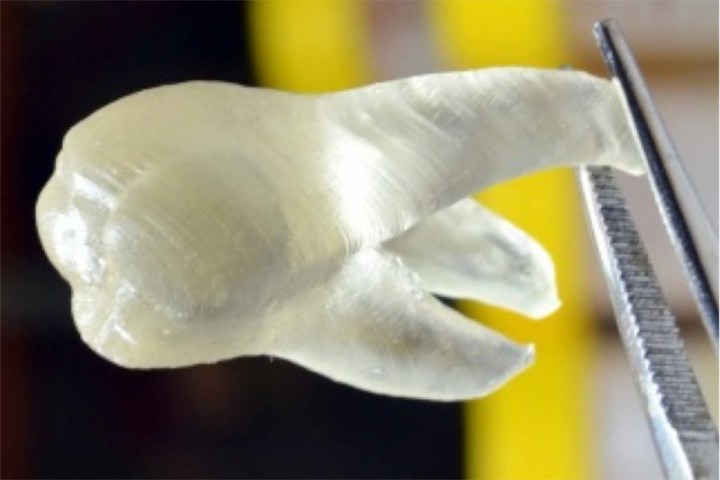
To make this possible, the teeth are 3D printed with a special antimicrobial plastic developed specifically for use inside the human body. The plastic, which is extremely hard and durable, is impregnated with antimicrobial quaternary ammonium salts. These salts are positively charged, and will therefore disrupt the negatively charged cell membranes of any bacteria they come into contact with — effectively causing them to rupture and die. “The material can kill bacteria on contact, but on the other hand it’s not harmful to human cells,” Andreas Hermann, lead researcher, told NewScientist.
During preliminary tests of the material, Hermann and his colleagues found that their salt-imbued polymer material killed over 99 percent of the microorganism Streptococcus mutans — the little bacterium that’s largely responsible for tooth decay. That’s even better than toothpaste and mouthwash.
Don’t set up a dentist appointment and start knocking out your molars just yet, though. While these results are certainly promising, the technology still isn’t quite ready for primetime. Additional tests must be conducted to determine if these 3D-printed salt teeth can retain their properties after being subjected to the daily punishments that normal teeth endure. Right now researches don’t know how the material holds up under prolonged exposure to saliva, acidic foods and liquids, or even toothpaste.
“For clinical used we need to extend this, and investigate the compatibility with toothpaste,” Herrmann said in an interview. He and his team also need to figure out if their polymer is strong enough to withstand chewing, but Herrmann concluded that he doesn’t think the overall process will take very long. “It’s a medical product with a foreseeable application in the near future — much less time than developing a new drug.”
Editors' Recommendations
- Nvidia turns simple text prompts into game-ready 3D models
- 3D printed cheesecake? Inside the culinary quest to make a Star Trek food replicator
- AMD is bringing 3D V-Cache back to Ryzen 7000 — but there’s a twist
- AMD teases performance of its revolutionary 3D V-cache chip
- Fighting football injuries with 3D-printed, hyper-personalized pads




